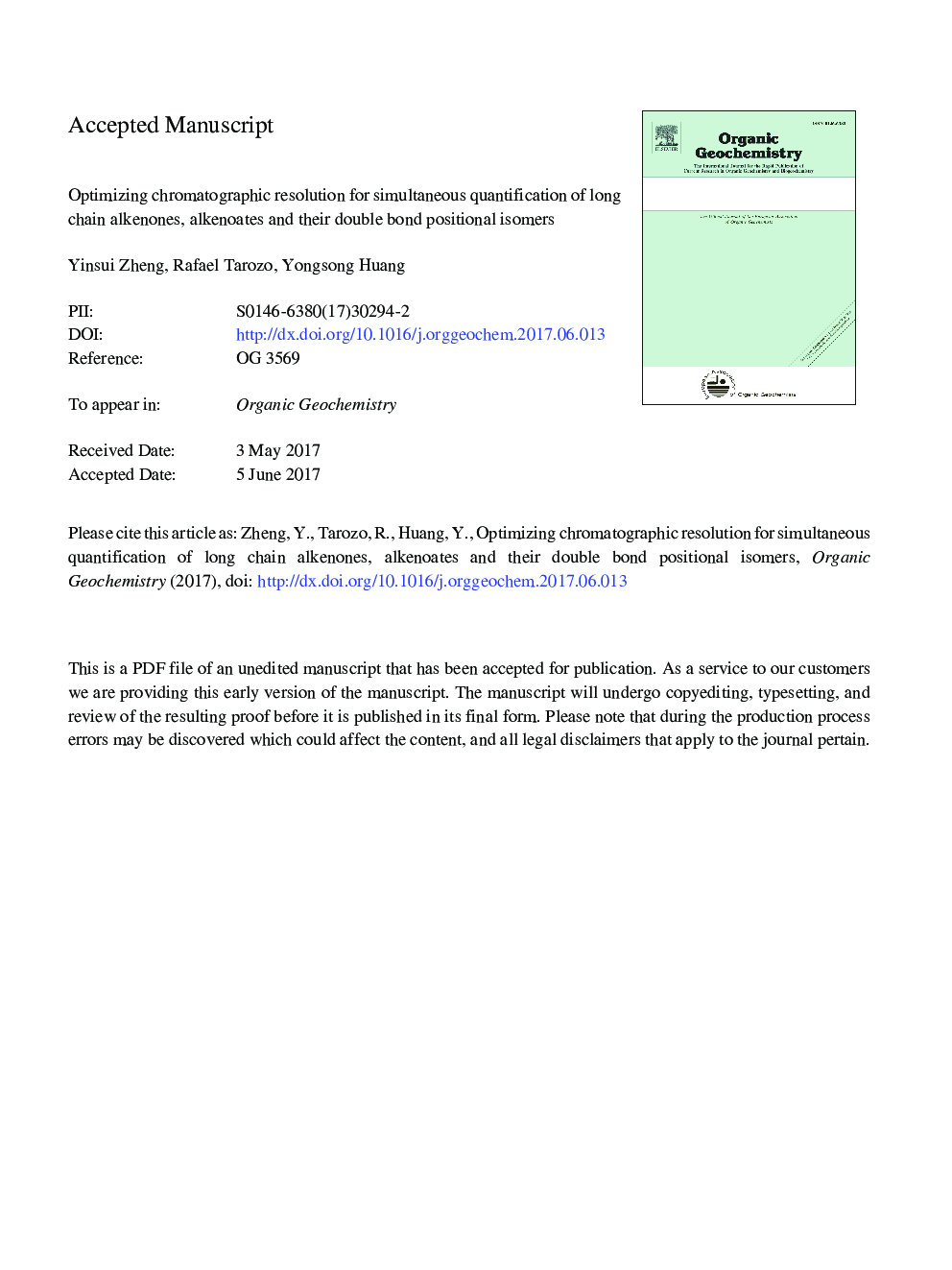| Article ID | Journal | Published Year | Pages | File Type |
|---|---|---|---|---|
| 5161364 | Organic Geochemistry | 2017 | 33 Pages |
Abstract
We report here our latest attempt to optimize gas chromatographic (GC) separation of long chain alkenones and alkenoates from haptophyte cultures and sediments. Building upon the previously reported separation using VF-200 ms column (60 m Ã 250 μm Ã 0.1 μm) (Longo et al., 2013), we tested multiple GC columns with different column length, film thickness and variable loadings of poly(trifluoropropylmethylsiloxane) stationary phase from two separate manufacturers (Agilent and Restek). We show that Rtx-200 (105 m Ã 250 μm Ã 0.25 μm) GC column completely eliminates the co-elution between long chain alkenones and alkenoates, fully resolves the previously partially co-eluting alkenones (e.g., C38:2 ethyl and C38:4 methyl alkenones) and improves the resolution of alkenone and alkenoate double bond positional isomers. Since the debut of the alkenone paleothermometer three decades ago, long chain alkenoates have always been considered an annoyance for paleotemperature reconstructions and are routinely removed by saponification. Our new separation method simplifies the sample preparation for alkenone analysis and improves the application of alkenone/alkenoate proxies, which opens the door for paleoclimate application of alkenoate-based paleothermometers alongside alkenones. We also report the structure determination of new alkenoate isomers using dimethyl disulfide derivatization.
Keywords
Related Topics
Physical Sciences and Engineering
Chemistry
Organic Chemistry
Authors
Yinsui Zheng, Rafael Tarozo, Yongsong Huang,
